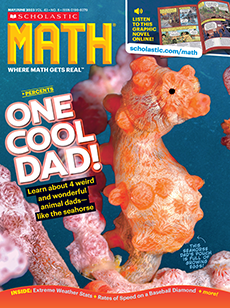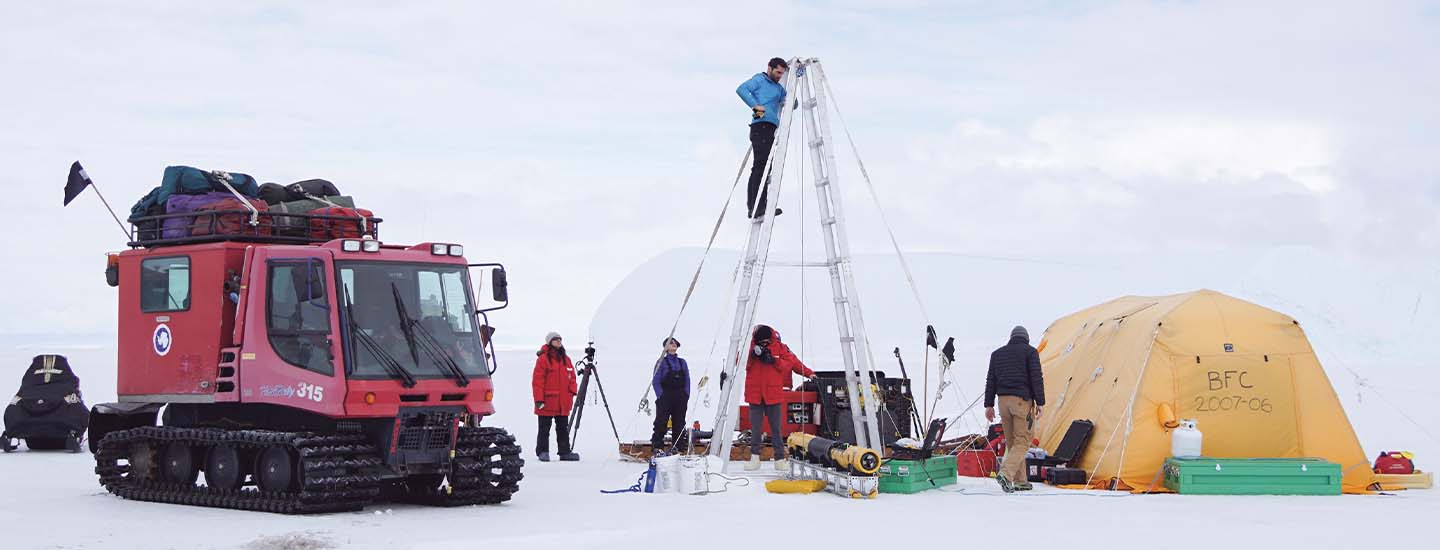B. E. Schmidt/Icefin/Project RISE UP
Britney Schmidt
When Britney Schmidt stepped out of the bright-yellow research tent, snow and ice stretched for miles around her. It was early January 2020, and her team had been camping on the Thwaites Ice Shelf in western Antarctica for nearly five weeks. Schmidt is an earth scientist, now at Cornell University. She and her international team were exploring the cold, dark waters underneath the ice shelf. Her main tool: a remotely operated vehicle (ROV) named Icefin. She and her colleagues had lowered Icefin through a narrow hole in the ice, and were controlling it from the tent.
Schmidt handed the controls to Dan Dichek, an engineer on the Icefin team, while she went to use the restroom. “When I got back, he was like, ‘Britney, there’s some really weird stuff,’” she recalls. Schmidt looked at Icefin’s video feed and saw a ghostly white sea anemone dangling from a burrow in the underside of the ice shelf. Nearby were shrimp-like animals crawling upside down, using their feet to walk along the frozen surface above them.
Britney Schmidt sat inside a bright-yellow research tent. Snow and ice stretched for miles all around. It was early January 2020, and Schmidt had been camping on the Thwaites Ice Shelf in western Antarctica for nearly five weeks. She and other scientists were exploring the cold, dark waters underneath the ice shelf.
Schmidt is an earth scientist at Cornell University. She helped design a remotely operated vehicle (ROV) named Icefin. She and her colleagues had lowered Icefin through a narrow hole in the ice shelf. Now they were controlling it from inside the tent.
Schmidt took a break and handed the controls to engineer Dan Dichek. “When I got back, he was like, ‘Britney, there’s some really weird stuff,’” Schmidt recalls. She looked at Icefin’s video feed and saw a ghostly white sea anemone. It was dangling from a burrow in the underside of the ice shelf. Nearby were shrimp-like animals that were crawling upside down. They used their feet to walk along the frozen surface above them.

